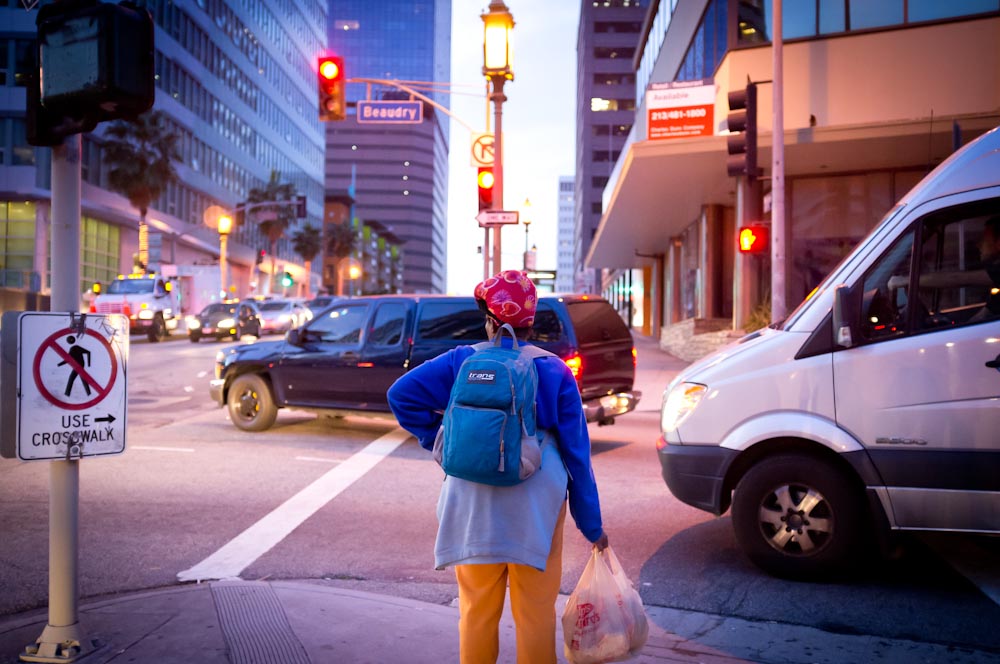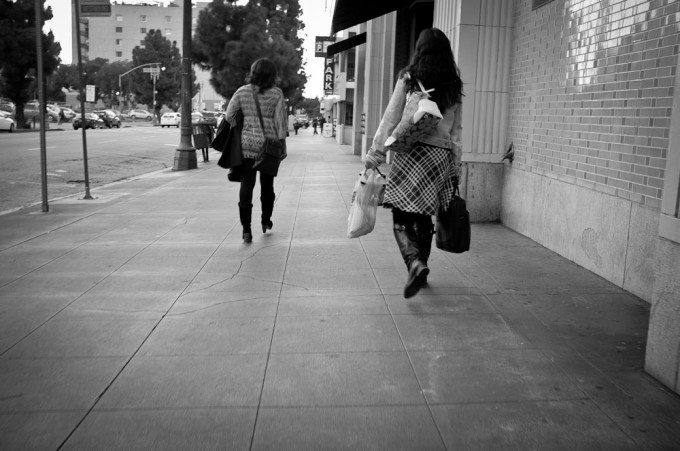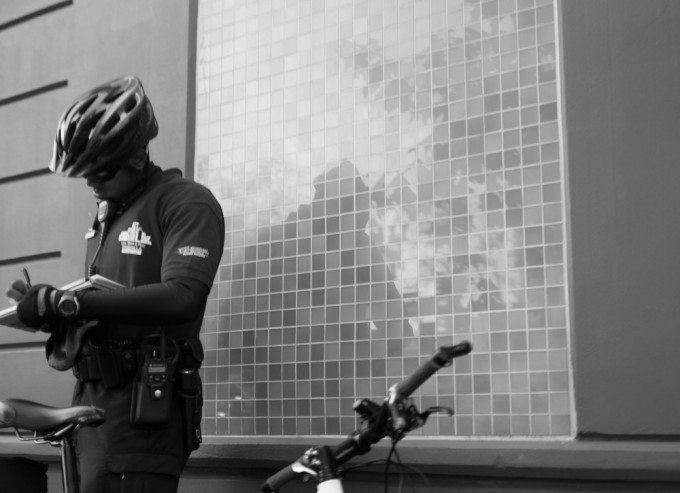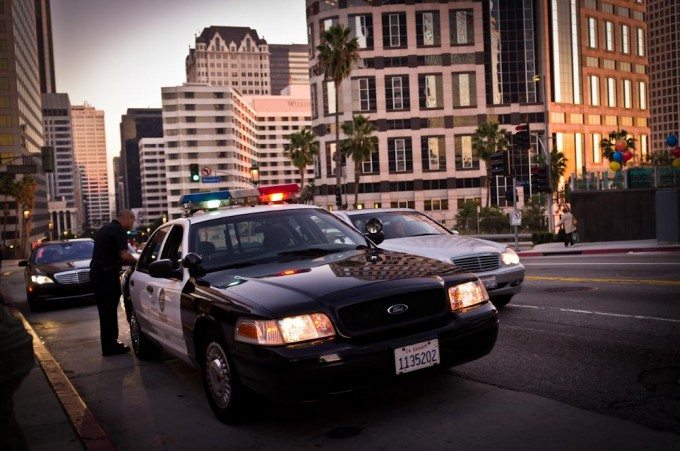I’ve been told by friends and colleagues that street photography came as a breath of fresh air into an otherwise mundane world of shooting landscapes and studio portraits, while many others, myself included, found it to be inherently uncomfortable in just about every way possible. Finding the beauty in the commonplace, and capturing it without disrupting your environment isn’t something that comes easily to all, but it seems we can all agree that there is a certain type of candid allure on the streets that simply can’t go undocumented.
Also be sure to check out our Editor in Chief’s post on how the camera retaught him street photography.
Make Yourself Invisible
It’s said over and over again when talking about street photography. In fact, Henri Cartier-Bresson, the undisputed father of photojournalism, said it well:
“One has to tiptoe lightly and steal up to one’s quarry; you don’t swish the water when you are fishing.”
The “fishing” analogy is so often used in photography, but it’s relevance cannot be overstated when discussing street shooting. Learning to be comfortable in your environment is arguably the most important part of street photography. Much of it is a mental obstacle, but there are a few things that I’ve discovered that not only made me more comfortable, but also made people on the street more comfortable with my presence.
First and foremost, I needed to rethink my gear. I shot on the street initially with a big Nikon DSLR and a 35mm lens. It seemed inconspicuous enough to me, but people on the street don’t take kindly to being shot by a large DSLR. It grabbed people’s attention with it’s large black body and loud clacking mirror. It went entirely against the purpose of street photography—blending into your environment to catch candid moments happening around you. Not to mention, I only needed to hear the words “terrorist” and “creep” a few times before I realized something needed to change.
X100
Then came the Fuji X100. There are a few very compelling things about this camera that can completely transform your ability to street shoot comfortably.
First, it’s small, and it’s very light. Roaming the streets for hours at a time searching for scenes is not only intellectually tasking, but at times can be physically straining as well. The last thing you need is 5 pounds of camera gear hanging around your neck all day. In addition, anecdotal evidence shows that smaller cameras are more likely to be carried along, while DSLRs often sit at home. I always regret not bringing my camera with me, but I’ve never once regretted actually bringing it. This is even more true for the X100.
It’s harmless. The X100 is a beautiful piece of kit, but on the street it simply isn’t taken seriously. It’s treated like a toy. There’s no 200mm telephoto lens or loud mirror clacking to distract people. In fact, I’ve had a number of people ask me why I’m shooting with a “film camera”. Instead of bothering to explain that there’s an APS-C sensor and Fuji’s custom built EXR image processor inside the body, I just shrug it off with a simple, “because people don’t mind it”. People are indifferent to film, as it seems there is a mental disconnect between a shot being taken, and it actually being developed and examined. I must say, I’ve never been so happy to have my gear be misunderstood.
Most importantly, it takes phenomenal photographs. A sharp lens, excellent high ISO performance, and my very favorite focal length for shooting on the street. There are so many options now for small cameras with large sensors, and they’re getting better every day. The Fuji X100, the Leica X1, Olympus E-P3, and so many others that are all capable of taking absolutely stunning pictures. Ditching your DSLR for a small camera isn’t nearly the compromise it once was.
The Intellectual Hurdle
But wait, there’s still the intellectual hurdle.
What if they get angry?
Even though humans are inherently vain, we don’t like being caught off guard. When things are out of our control, we get scared, and our fright turns immediately into anger. I cannot remember a time in recent history when I haven’t been confronted at least once by somebody I’m photographing. It’s simply part of the territory, and your best bet is to go into the situation prepared.
For me, the most effective method of diffusing anger has been to smile, apologize, and walk away. Asking to take one’s picture isn’t necessarily a bad idea, but it takes away from the candidness of the scene. It’s trial and error, and you need to find what works best for you, but going into street photography fully aware of people’s potential reactions is the first step in learning how to diffuse them.
Just Shoot
Lastly, it seems that carrying a smaller camera has taught me to think less critically when shooting.
The X100 can, at times, be an incredibly frustrating camera to use. It’s autofocus is horribly slow, and often inaccurate, and metering goes haywire more often than I’d like. Unfortunately, there’s no time to chew on your framing, or worry about the autofocus not working properly. You need to just shoot. Pre-set your focus, pop it in aperture priority, and just shoot. I’ve stopped worrying about the autofocus not taking, or the metering underexposing my shot. It seems like a step backwards, but some of my favorite shots have been ones I didn’t even think to take. You could spend hours setting up your framing and exposure, but you’ll be largely missing the purpose of using a small camera for street photography in the first place: making yourself invisible.
Shooting on the street, particularly with the X100, has been one of the most rewarding experiences I’ve had in years. It is wildly refreshing to shoot with only your initial perception of the scene in mind. It’s all about going with your gut, and it sure is a lot of fun.
Buy the Fuji X100 here at Amazon
Please Support The Phoblographer
We love to bring you guys the latest and greatest news and gear related stuff. However, we can’t keep doing that unless we have your continued support. If you would like to purchase any of the items mentioned, please do so by clicking our links first and then purchasing the items as we then get a small portion of the sale to help run the website.





